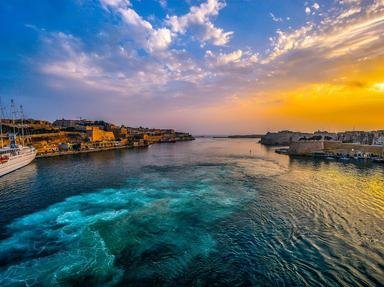Quiz Answer Key and Fun Facts
1. Situated in the Mediterranean Sea, which island is closest to Malta?
2. Which of the following is NOT a reason Malta was geographically strategically important in the Mediterranean region?
3. What does the name Malta mean?
4. Of the following civilisations, which one did *NOT* rule Malta?
5. Invaded and colonised for many years by peoples of different religions, what has emerged as the major religion in Malta?
6. Malta is a very multicultural country, but from which language did modern Maltese evolve?
7. Fenkata (ingredients pictured) is the national dish of Malta. What is the main ingredient?
8. Valletta is the harbour capital of Malta. Which of the following attributes applies to this city?
9. The peace-loving Maltese finally wanted to be the masters of their own country; Freedom Day is celebrated in Malta annually on 31st March. What event does it commemorate?
10. Malta is an archipelago. What is the name of the second biggest island?
Source: Author
1nn1
This quiz was reviewed by FunTrivia editor
agony before going online.
Any errors found in FunTrivia content are routinely corrected through our feedback system.
